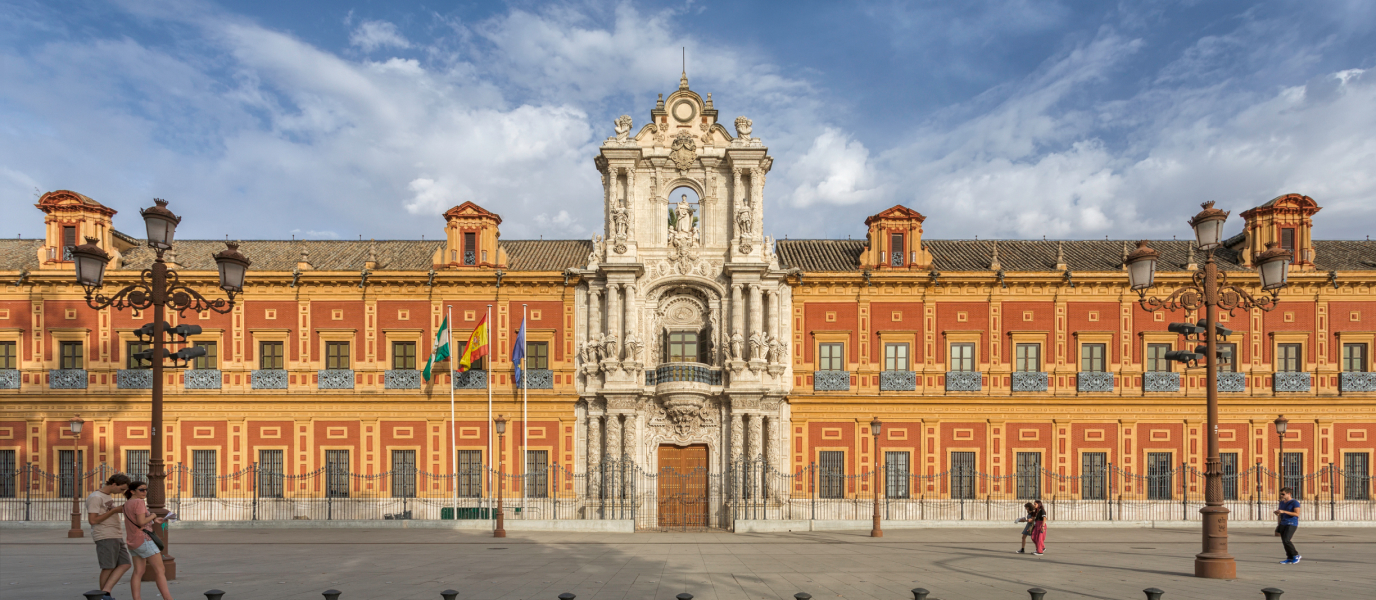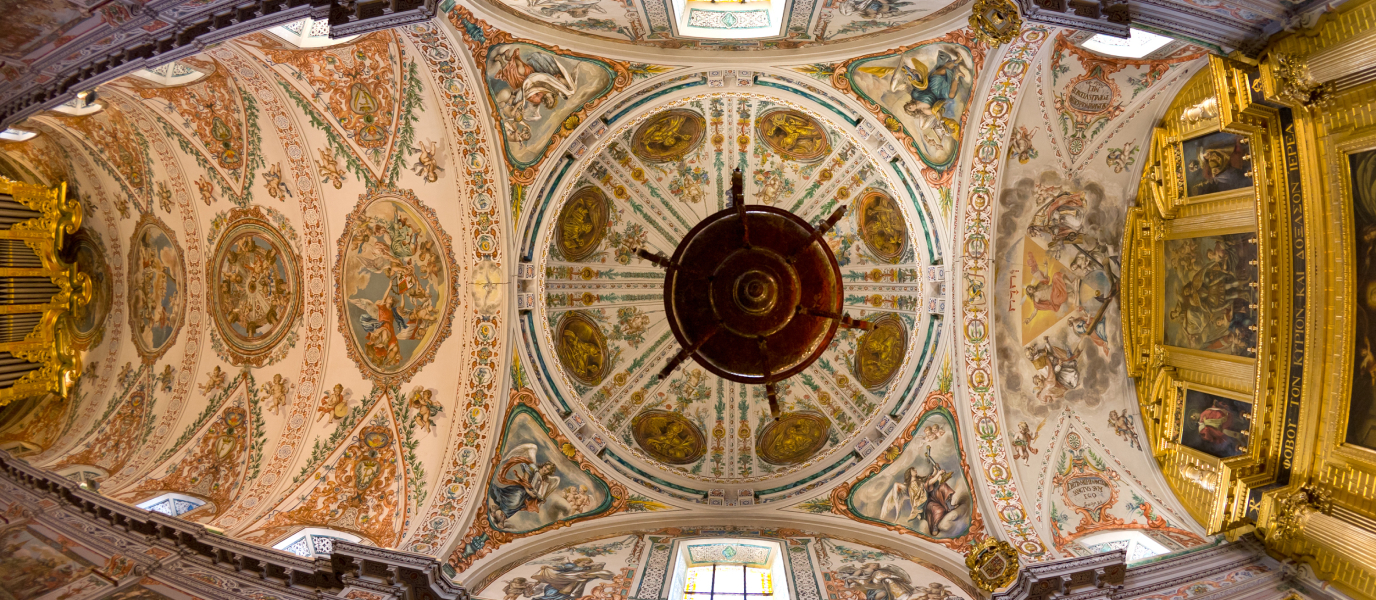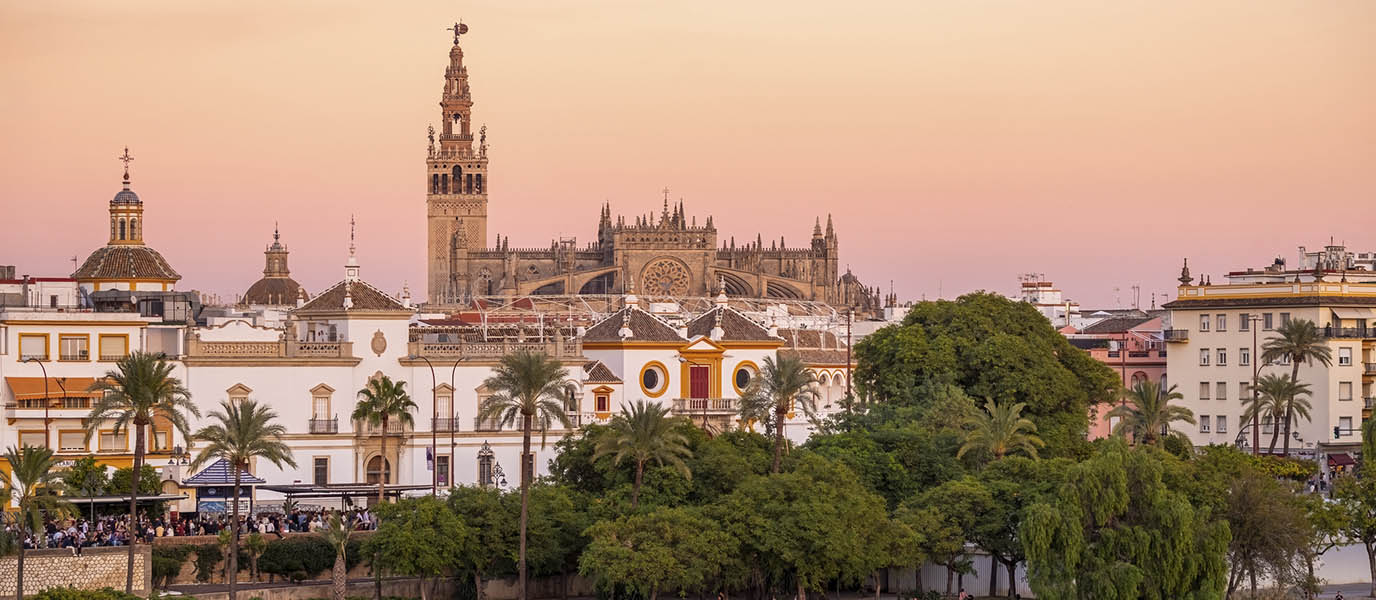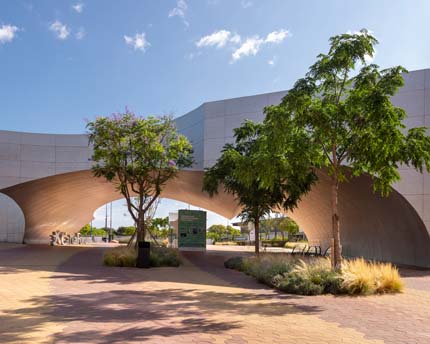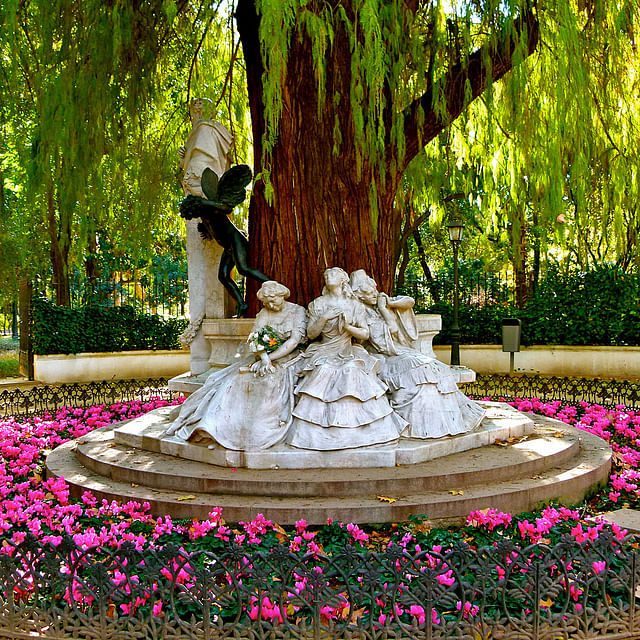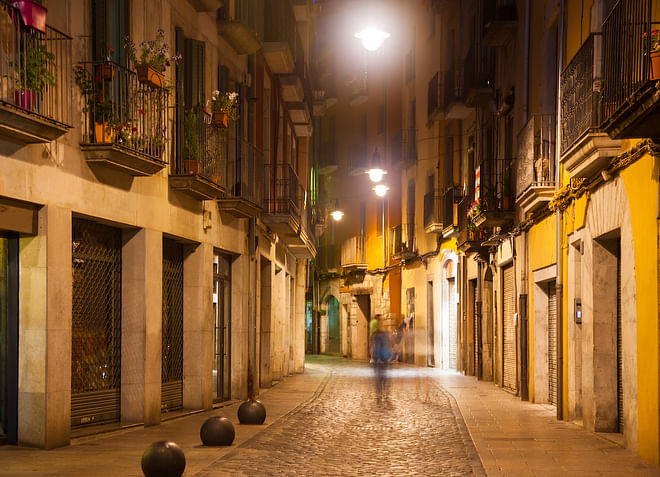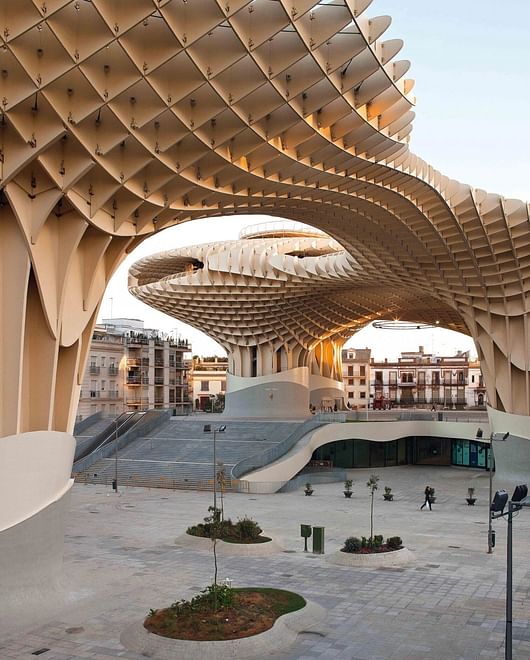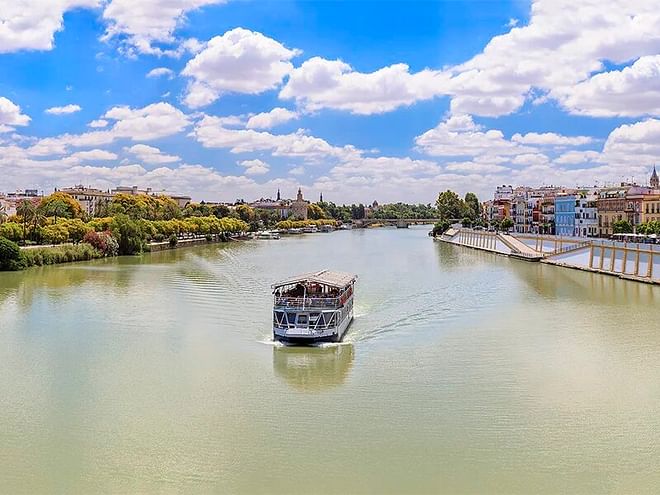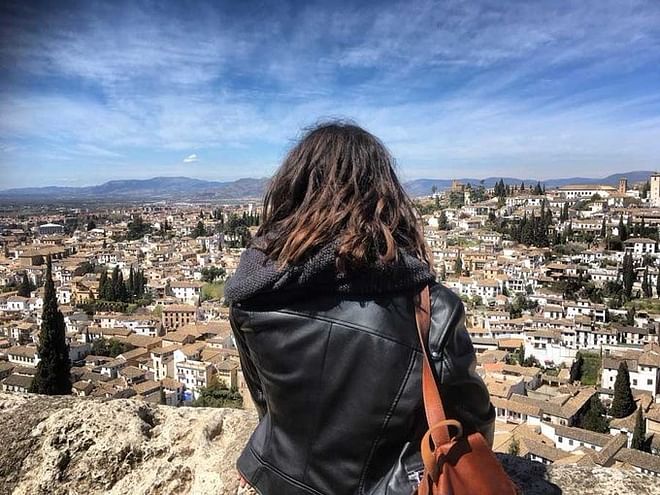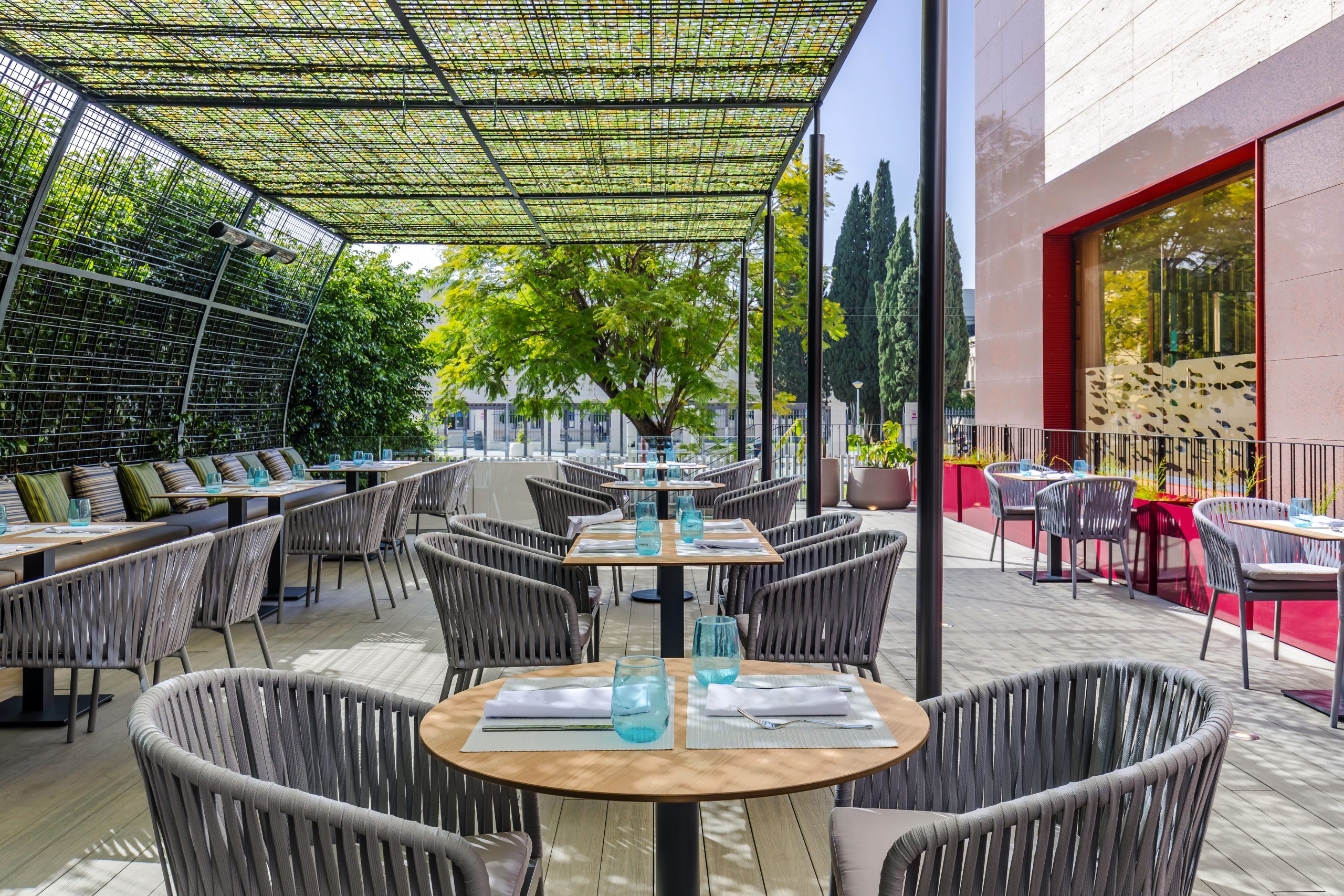It’s impossible for San Telmo Palace to go unnoticed among visitors to Seville’s historic quarter. Its magnificent Baroque façades and collection of symmetrical windows, turrets and, above all, its Churrigueresque entrance comprise one of the most impressive sights in the city. The vast building can be seen from both Calle de la Rábida and Calle Palos de la Frontera as well as from the Guadalquivir river. In fact, the palace even once had its own jetty.
The palace also houses rich heritage, as a result of the diverse uses that it has had over more than three centuries, from being the headquarters of the Universidad de Mareantes (a school for sailors) to now housing the seat of the President of the Regional Government of Andalusia.
The history of the San Telmo Palace
Construction on San Telmo Palace began in 1682 on land that lied outside of Seville’s city walls on the banks of the Guadalquivir river. Work lasted little over a century until 1796 and the project underwent several delays and changes. Its original function as the headquarters of the college-seminary of the Universidad de Mareantes, evolved—almost a century later—into the Colegio de la Marina, where Gustavo Adolfo Bécquer, a figure known not for his sailing achievements but his literary prowess, completed part of his studies.
In the mid-nineteenth century San Telmo Palace fell into certain disuse, until the Dukes of Montpensier, Antoine d’Orléans and Infanta Luisa Fernanda of Spain, took it over in 1849 to make it their residence. The couple, who have gone down in history as the parents of María de las Mercedes, the first wife of King Alfonso XII, established the palace as the Corte Chica, or the Small Court, as it was referred to by Queen Isabella II.
Subsequent to this period the palace was to end up being ceded to the Church, which, in the early twentieth century, converted it into a seminary. Unable to maintain the enormous building, and faced with the risk that it could end up suffering structural damage, the Church, in turn, ceded its management to the Regional Government of Andalusia in 1989. Thus it was converted into the seat of the President of the Regional Government, for which a large part of its rooms required significant remodelling work in order to restore the building’s original structure.
Art in the San Telmo Palace
Successive refurbishments, due to the palace’s many different functions, had significantly affected the project dating from the seventeenth and eighteenth centuries. This was particularly the case for an unfortunate conversion of some of the rooms into study spaces and cells for seminarians. As a consequence, the institution that currently owns the palace decided to carry out significant remodelling work.
The outside of the palace wonderfully recuperated its original appearance, as well as the splendour of the symbols that decorate it, such as its medallions and, above all, various statues. Of the latter, the most striking examples are situated on the palace’s main façade: those of the so-called Gallery of the 12 Illustrious Sevillians, made in 1895 by Antonio Usillos. Some of the people they honour include:
- The great painter Diego de Silva Velázquez
- Friar Bartolomé de las Casas, well-known for his defence of the rights of the indigenous people of the Americas
- The esteemed painter Bartolomé Esteban Murillo
- The writer and dramatist Lope de Rueda
- Rodrigo Ponce de León, major general of the Conquest of Granada
- Juan Martínez Montañés, one of the most important Sevillian sculptors
Special mention goes to the San Telmo Palace’s main façade, built in Churrigueresque style and designed by two members of the Figueroa family. It features statues of the three saints that, according to tradition, protect the building: Saint Elmo (San Telmo) himself, the patron saint of sailors, San Leander of Seville and Saint Hermenegild.
In terms of the palace’s interior, the main courtyard designed by Leonardo de Figueroa and surrounded by a harmonious gallery supported by round arches, particularly stands out. The gallery opens out onto the courtyard by way of balconies, which perfectly match the pilasters that support the arches.
The San Telmo Palace’s main courtyard opens onto the chapel, which is, without a doubt, one of its most noteworthy artistic features. Particularly striking is its high altar, dedicated to the image of Our Lady of Good Air. Saint Ferdinand, patron saint of the city of Seville, and, of course, San Telmo, are also represented.
When in the chapel, we recommend looking up to admire the frescos painted in the ovals of the vaults by the local Romantic artist Antonio Cabral Bejarano.
Palace legends
In the late nineteenth century, the widowed Duchess of Montpensier decided to cede part of the palace’s gardens to the municipality of Seville. Today they are known as the María Luisa Gardens, without a doubt, one of the city’s most pleasant places to take a stroll.
Part of the remaining gardens were transformed at the time of the seminary, in the twentieth century, into a football pitch, but they were fortunately recuperated by the Regional Government of Andalusia for their original function.
It is said that from time to time a mysterious white woman passes through the rooms of the palace. The figure, who seems to also have a fondness for the tree-lined streets and avenues of María Luisa Park just may well be the Duchess of Montpensier, or even her daughter María de las Mercedes, the Queen of Spain who died six months after marrying King Alfonso XII.




































































